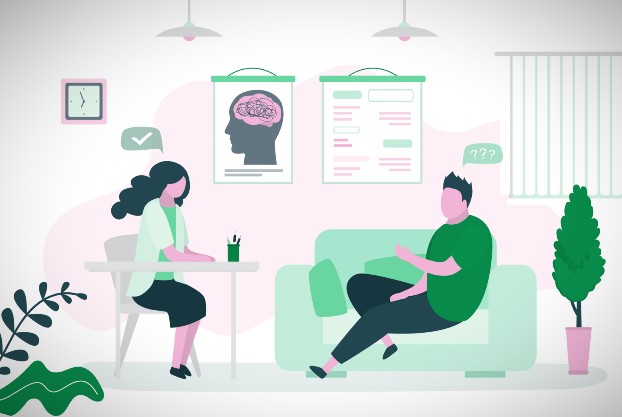Back pain can be debilitating and frustrating to deal with. Whether you have acute or chronic back pain, many treatments and lifestyle adjustments may help provide relief. Read on for 14 tips that can aid in alleviating back pain.
1. Apply Heat Therapy
Applying heat is an easy and effective way to help relax muscles and decrease stiffness. Try using a heating pad, hot water bottle, warm bath, or warm compress on the affected area for up to 20 minutes at a time. The warmth helps increase blood flow to deliver healing nutrients.
2. Use Cold Therapy
Cold therapy numbs nerve endings and reduces inflammation. Use an ice pack wrapped in a thin towel or try a cold gel pack. Apply it to the sore area for 10-15 minutes every few hours as needed. Don’t apply ice directly on the skin.
3. Take Anti-Inflammatory Medication
Over-the-counter non-steroidal anti-inflammatory drugs (NSAIDs) such as ibuprofen or naproxen can help reduce swelling and pain. Follow dosage instructions carefully and with food to avoid stomach upset. Check with your doctor if you take other medications or have health conditions that may interact with NSAIDs.
4. Try Topical Pain Relievers
Look for creams, gels, patches, sprays, or roll-ons containing ingredients like menthol, camphor, capsaicin, lidocaine, or salicylates. These can be rubbed onto sore muscles and joints to provide cooling or warming relief right where you need it. Topical pain products are easy to use and won’t upset your stomach.
5. Stretch and Strengthen Your Core
Having strong core muscles provides more support for your back. Try yoga poses, Pilates exercises, or core strengthening routines to safely build abdominal and back muscles. Work with an instructor to ensure you use the proper form. Start slowly and avoid strain.
6. Improve Flexibility
Tight hamstrings, hip flexors, and muscles can exacerbate back pain and spasms. Regular stretching helps lengthen muscles and prevents cramps and spasms. Try stretches for the lower back, hips, hamstrings, and chest for full-body flexibility. Yoga is great for improving the range of motion.
7. Use Proper Lifting Techniques
Bending and lifting improperly is a common cause of injury and strain. When picking items up from the floor, use your legs for the lift, not your back. Keep your back straight and avoid twisting as you lift. Hold items close to your body at waist height when carrying. Get help or use dollies for heavy objects.
8. Maintain Good Posture
Slouching, slumping, and hunching over can strain the back and neck. Be mindful of posture and sit or stand tall with your shoulders back. Use ergonomic chairs and desks aligned properly to encourage proper spine alignment. Place pillows behind your lower back for support. Set reminders to correct your posture throughout the day.
9. Get Enough Rest
Lack of sleep prevents the body from fully healing and increases inflammation. Aim for 7-9 hours of quality sleep per night. Good sleep habits like sticking to a schedule, limiting electronics at night, and creating a restful environment help optimize rest time. Address sleep disorders for better sleep.
10. Manage a Healthy Weight
Excess weight, especially around the midsection, puts extra pressure on the spine. Losing extra pounds helps take pressure off the back. Speak with your doctor about safe weight loss strategies. Combining a balanced diet with cardio and strength training provides multiple back benefits.
11. Quit Smoking
Smoking impairs blood flow which delivers nutrients for healing injured tissue. Quitting provides immediate and long-term health benefits like improved circulation and lung function. Get support to stop smoking through counseling, nicotine replacement products, or prescription medications that reduce cravings.
12. Try Massage Therapy
Massage can help loosen tense muscles, ease stiffness, and improve mobility. Make sure you find an experienced massage therapist. Let them know where you have pain so they can use methods to increase circulation and relax the affected muscles without putting extra strain on the back.
13. See a Physical Therapist
A physical therapist can evaluate your back pain and create a specialized treatment plan. They may use techniques like ultrasound, electrical stimulation, mobilization, stretching, and strengthening exercises to help provide relief. Seeing a physical therapist can aid recovery and teach you how to prevent re-injury.
14. Consider Acupuncture
Acupuncture uses very fine needles placed at specific points in the body to reduce pain. Some studies have found it can lessen chronic lower back pain. It aims to restore the flow of energy to remove blockages thought to cause pain and dysfunction. Discuss it with your doctor to see if acupuncture might be worth exploring.
Conclusion
Back pain is highly prevalent, but there are many ways to find relief through self-care, physical therapy, medication, exercise, massage, and relaxation techniques. Pay attention to posture and maintain a strong, flexible back through targeted stretches and core exercises. Stay active but don’t overdo activities that aggravate your back. Managing weight, quitting smoking, and getting quality sleep also help remove strain. If pain persists, consult your doctor for a tailored treatment plan. With time and consistency in practicing these tips, you can get back to enjoying your life with less pain holding you back.
FAQs
Q: What type of doctor treats back pain?
A: Back pain can be treated by primary care physicians, chiropractors, orthopedists, neurologists, rheumatologists, physiatrists, physical therapists, and pain management specialists. Seek care from a licensed medical professional.
Q: When should you go to the emergency room for back pain?
A: Go to the ER immediately if you experience new nerve damage issues like bowel or bladder changes, numbness, weakness, or loss of leg function. Sudden extreme back pain may indicate a medical emergency needing prompt treatment.
Q: What vitamins help with back pain? A: Some vitamins that may aid in relieving back pain include vitamin D to improve bone strength, magnesium to relax muscles, turmeric/curcumin to reduce inflammation, omega-3 fatty acids to decrease stiffness, and B vitamins to improve nerve functioning. Consult your doctor before taking new supplements.
Q: What can you do for a pinched nerve in your back? A: To help a pinched nerve, rest the affected area, apply cold packs, take OTC pain medication, get a massage, and see a doctor for possible steroid injections or physical therapy. Surgery may be needed for severe or persisting cases.
Q: Is walking good for a bad back? A: Walking is often recommended for those with chronic back pain. It gently works the muscles to strengthen the back without high impact. Start slow and short adding distance gradually. Make sure to maintain proper posture and take breaks as needed when walking.








